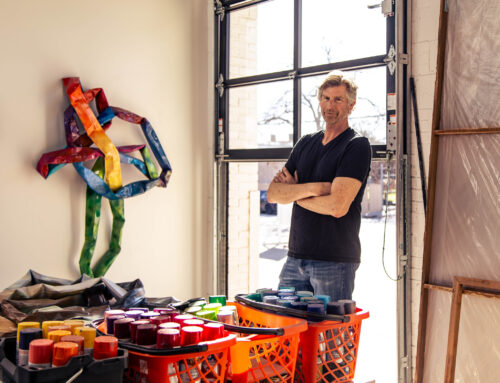When we think of great cities, we often think of their spectacular scenery, awe-inspiring architecture or world-class museums. And often, in addition to these characteristics, great cities feature celebrated parks and green spaces.
Think of New York’s Central Park, San Francisco’s Golden Gate Park, or Chicago’s Grand and Lincoln Parks. These large, urban tracts draw residents from all over the city to exercise, compete in athletics, enjoy concerts, watch theater or simply relax in the vast nature nestled in the city’s center.
Dallas has some pockets of green, like the area around White Rock Lake and the Arboretum, but lacks a substantial parkscape that can capture the imagination of our city’s residents and vault the city into the ranks of visionary urban planning.
The Trinity River project seeks to remedy this shortcoming and is a farsighted idea that could establish Dallas as a premier urban environment. During the 1998 bond election, Dallas voters allocated $246 million to create a large park and green space on the banks of the Trinity River that would rehabilitate an underutilized, stagnant waterway, provide a southern flank for downtown development, and create a new road that would siphon approximately 80,000-100,000 vehicles from the Stemmons Expressway. At the time of the bond election, however, I felt the Trinity River project was an ambitious mayor’s folly, destined to run afoul of environmentalists and local neighborhood interest groups, and a low priority on my list of what needed attending to in Dallas.
Now, five years later, we have a different mayor who has focused her term in taking care of the basics; so, as a city, we can turn our attention to the luxuries that make Dallas a desirable place to live. The scope of the project is enormous and calls to mind the grand projects of New York City’s most renowned urban planner, Robert Moses, who is responsible for the bridges, tunnels and important roads that link the island of Manhattan to its surrounding boroughs, as well as the construction of numerous playgrounds and parks.
The Trinity River project site encompasses 2,000 acres of the Dallas Floodway and more than 6,000 acres of the Great Trinity Forest and extends for more than 20 miles from the northwest to the southeast limits of the city. The briefing on the project prepared for the city council, quoted in the Dallas Morning News, calls the proposal “the largest urban park system in America.”
In March, Laura Miller’s team of urban designers and landscape architects presented to the city council a newly inspired plan that seeks to overcome the objections to the high-density road construction the original concept featured. The new proposal still contains a road to alleviate traffic on Stemmons, but the road is now a tollway to the west of downtown that shrinks to a four-lane as it travels adjacent to the business district, and will only gird the riverbank on the north side of the river, leaving the south side a natural contour.
The proposition also includes a paved pedestrian path, bridges linking the path to the park area, and a series of four terraced lakes that would meander through wetlands, providing natural purification from pollutants. Staggering the height of the lake creates a waterfall effect that enhances the water flow. This new recommendation fulfills the project’s original mandate of better flood protection, improved traffic, urban development opportunities and better recreational and environmental benefits.
The city council has not yet voted to adopt this new version of the project, but you can express your opinion about it by contacting your council representative: either District 13’s Mitchell Rasansky at 214-670-3816 or District 11’s Lois Finkelman at 214-670-7817. More detailed information on the Trinity River plan is available at www.trinityriver.org.






